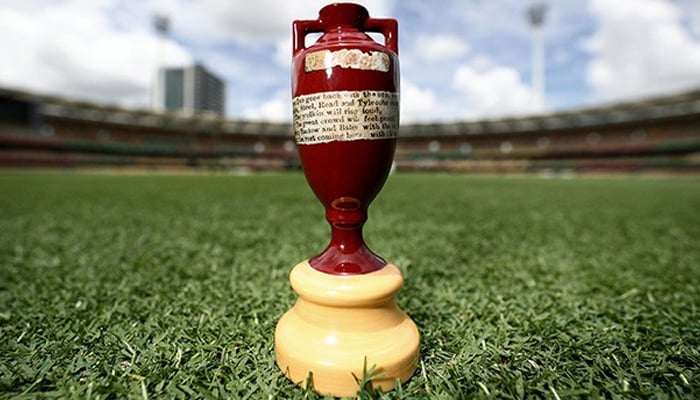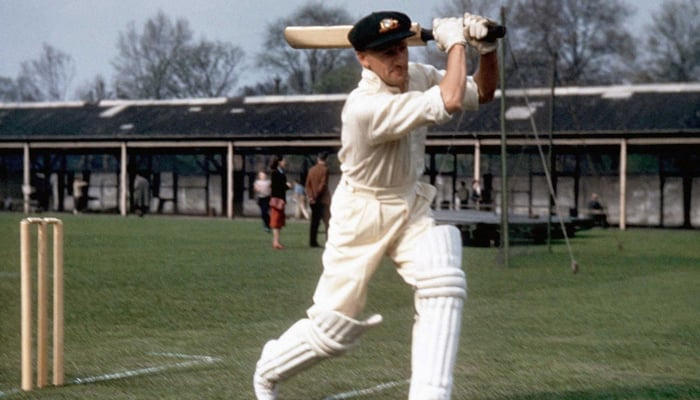The Ashes: A look back at defining moments of cricket’s oldest spectacle
It is hoped that the Ashes 2023 will also enthral the fans with swashbuckling and nerve-wracking stuff
June 21, 2023

The sporting world is full of events that don't only provide entertainment to the fans but also with moments of pure magic as well as some heart-stopping stuff.
The Ashes series played between the two traditional cricketing rivals - England and Australia – is undoubtedly a spectacular event due to its intensity, history, background and culture.
It is hoped that the Ashes 2023 will also enthral the fans with swashbuckling and nerve-wracking stuff.
Meanwhile, coming to the historical background, the term 'Ashes' was used for the first time in 1882 after England lost on home soil to Australia at The Oval by seven runs after they failed to chase a target below 100.
Sporting Times declared the defeat as the death of the English team.
"The body will be cremated and the ashes taken to Australia," Sporting Times said.
On the other hand, from 1882, a lot has been written throughout the 143-year history of the Ashes series.
In this piece, we will divulge into the past to discover the defining moments.
Bodyline series
Since its inception, England remained dominant in most of the series but after the first World War, the domination of Australia began.
And to curb the humiliating series of defeats and stop the batting genius Don Bradman from piling up runs, England, ahead of the 1932-33 series, adopted the fast-leg strategy, famously known as ‘The Bodyline.’
The controversial and dangerous tactic saw the bowlers bowling straight at the bodies of the Australian batters to force them to defend their bodies with bats and provide a catch to the leg-sided field.
Even though England won the controversial series convincingly and Bradman only managed one century, the approach led to heated debates.
The Marylebone Cricket Club (MCC) had to change the laws to limit the number of fielders on the leg side.
However, Australia regained the Ashes in 1934, winning a closely fought series 2-1 and retained it till 1954.
Bradman’s departure
The 1948 series saw Don Bradman bringing the curtain down on his illustrious career after registering his name among the greatest batters of all time.
In just 52 Tests, the run-machine maestro scored 6,996 runs at a staggering average of 99.94, with 29 centuries and a record number of 12 double tons.

In his last match at The Oval, he only needed four runs to achieve an average of 100 but got dismissed for zero on the second ball, as the entire ground stood up to applaud the genius.
Botham, Stokes Headingley heroics
Who can forget the heroics of legendary all-rounder Ian Botham in the third Test of the 1981 series and Ben Stokes' sensational 135 in the 2019 series?
In the 1981 Test, Australia conceded a healthy first-innings lead of 227 and decided to enforce the follow-on.
But it seemed as if the stage was set for Botham to showcase his miraculous skills with both bat and bowl and snatch victory from the jaws of defeat.
England, being at the brink of defeat with seven batters back in the pavilions for just 135 runs, were rescued by Botham, who notched innings of pure class, scoring 149 against a world-class Australian attack.
Bob Willis took eight wickets to help England defend 130 and win by 18 runs.

In the third Test of the 2019 series, Stokes played a knock in which he showed endurance, defiance and brutal hitting. Chasing 359 and with wickets tumbling in quick succession, Stokes made the difference.
On the last wicket, England required 67 but Stokes kept his cool and retained most of the strike besides unleashing brutal hitting when needed. He finished the game emphatically by smashing Pat Cummins for four as if he was a baby bowler.
Australia’s dominance
England won the 1985 series 3-1 and the 1986-87 series in Australia by 2-1 under the captaincy of Mike Gatting.
But, after the 1989 series, what followed was a humiliating period as the Aussies, who had already replaced West Indies as the cricketing powerhouse after the 1987 World Cup triumph, went on to win eight successive series. Among the eight series, the Aussies won four at home and four in England.
Players like Ricky Ponting, Justin Langer, Jason Gillespie, Glenn McGrath, Shane Warne, Bret Lee, and Mathew Hayden made Australia an unbeatable force under the leadership of Steve Waugh.
Till the 1989 series, the win-loss ratio was almost the same. But Australian dominance took the difference to 115, compared to 87 of England.
2005 epic
The 2005 Ashes series could arguably be called a ‘game-changer’ for England. An inexperienced team under the captaincy of Michael Vaughan punched above their weight and outfoxed the mighty Australians at home by 2-1 to end their 19-year Ashes triumph.
The series saw individual brilliance, closely fought encounters, the exchange of heated words from players of both sides and moments of sportsmanship.

England won both the Tests by the closest of margins, second by two runs and the fourth by three wickets as Andrew Flintoff emerged as the star. His heroics gave a new boost to a dying sport in the football-mad nation.
However, in the next series in 2006-07, Australia took revenge by ensuring a whitewash. Legends including Justin Langer, Shane Warne and Glenn McGrath retired after the series.
England’s triumph in Australia
After winning the 2009 series at home by 2-1, the high-on-confidence England competed in the 2010-11 series in Australia.
They did what no one else thought was possible: won the series in Australia for the first time since 1986-87. The Australian team comprised players like Michael Clarke, Mitchell Johnson, Ricky Ponting and Mike Hussey. But England, led by Andrew Strauss, surpassed the challenges and won the series by 3-1.
The star performer for them was Alastair Cook. He showed valiant and unbreakable resistance with the willow in the challenging conditions. Cook scored 766 runs with the help of three centuries and a highest score of 235 not out.
Demolition from Johnson
Mitchell Johnson, who remained an injury-hit bowler since making his debut in 2007, touched his peak during the 2013-14 Ashes series being at the top of his trade. He helped Australia complete a 5-0 whitewash and regain the ‘Urn.’
During the series, the former left-arm pacer was a nightmare for England batters, who were clueless against his barrage of sharp bouncers.
He took 37 wickets during the series and was declared the best player, having displayed some ferocious pace bowling rarely seen in this batter-friendly era.
Originally published in Geo Super









